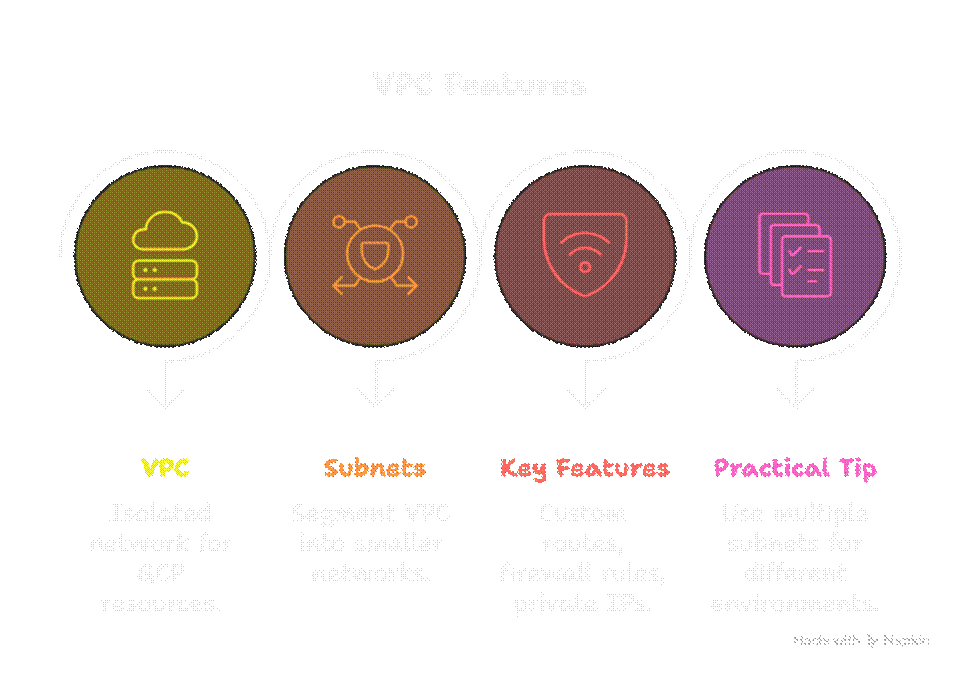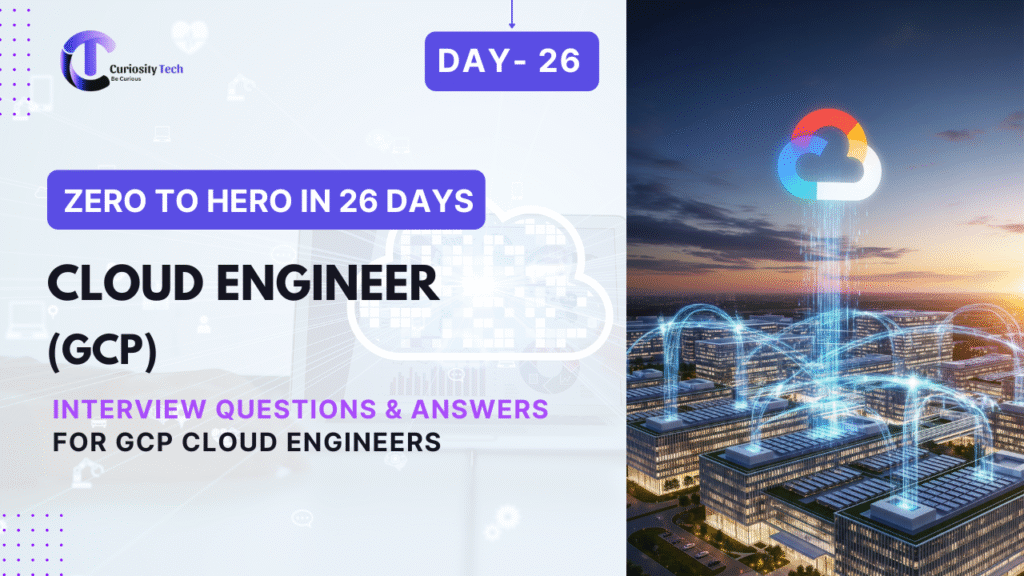Introduction
Landing a role as a Google Cloud Engineer requires not only hands-on expertise and certifications but also strong interview preparation. Interviews often test technical skills, problem-solving, design thinking, and real-world scenario handling.
At Curiosity Tech, engineers are trained to master GCP fundamentals, advanced services, architecture design, and interview readiness—ensuring they confidently tackle technical and behavioral questions.
Core Areas Typically Covered in GCP Interviews
| Domain | Key Topics |
| Cloud Fundamentals | Projects, billing, regions/zones, IAM basics |
| Compute & Networking | Compute Engine, GKE, Cloud Run, VPC, Load Balancing, Subnets |
| Storage & Databases | Cloud Storage, BigQuery, Cloud SQL, Spanner, Firestore |
| Serverless & DevOps | Cloud Functions, Cloud Build, Artifact Registry, CI/CD pipelines |
| Security & IAM | Roles, policies, VPC Service Controls, encryption, auditing |
| AI/ML & Data Analytics | Vertex AI, BigQuery ML, AutoML, data pipelines |
| Monitoring & Troubleshooting | Cloud Monitoring, Logging, Alerts, AIOps |
| Design & Architecture | High availability, multi-region deployments, disaster recovery, cost optimization |
Most Common Interview Questions (With Detailed Answers)
1. What is Google Cloud Platform, and what are its core services?
Answer:
Google Cloud Platform (GCP) is a suite of cloud services including compute, storage, networking, databases, AI/ML, analytics, and DevOps tools.
- Compute: Compute Engine, GKE, Cloud Run, App Engine
- Storage & Databases: Cloud Storage, BigQuery, Cloud SQL, Spanner, Firestore
- Networking: VPC, Cloud Load Balancer, Cloud CDN, Cloud NAT
- AI/ML: Vertex AI, AutoML, BigQuery ML
- DevOps & Monitoring: Cloud Build, Deployment Manager, Cloud Monitoring, Logging
GCP allows scalable, secure, and high-performance cloud-native applications.
2. Explain VPC and Subnets in GCP.
Answer:

3. What is Cloud Spanner, and when would you use it?
Answer:
- Cloud Spanner is a globally distributed, strongly consistent relational database.
- Use Cases: High-availability applications, global transaction systems, financial services.
- Key Benefits:
- Horizontal scalability
- Multi-region replication
- ACID-compliant transactions
- Horizontal scalability
4. How do you implement CI/CD in GCP?
Answer:
- Tools Used: Cloud Build, Artifact Registry, Deployment Manager, GitHub Actions
- Steps:
- Code pushed to version control (e.g., GitHub)
- Cloud Build triggers automated pipeline
- Build and test artifacts stored in Artifact Registry
- Deploy to GKE, Cloud Run, or App Engine
- Code pushed to version control (e.g., GitHub)
- Best Practice: Integrate automated tests, security checks, and rollback mechanisms.
5. How do you ensure high availability for multi-region applications?
Answer:
- Active-Active Deployment: Deploy services across multiple regions, distribute traffic using Global HTTP(S) Load Balancer.
- Active-Passive Deployment: Primary region active, secondary standby for failover.
- Data Replication: Use Cloud Spanner or Cloud SQL HA for cross-region replication.
- Observability: Cloud Monitoring, Logging, and alerts for proactive issue detection.
6. Explain IAM roles in GCP.
Answer:
- IAM (Identity and Access Management) controls access to GCP resources.
- Roles:
- Basic Roles: Owner, Editor, Viewer
- Predefined Roles: Specific access for services (e.g., BigQuery Admin)
- Custom Roles: Tailored permissions for organization requirements
- Basic Roles: Owner, Editor, Viewer
- Best Practices: Apply least privilege principle and use service accounts for automated workflows.
7. How would you troubleshoot a high-latency application in GCP?
Answer:
- Step 1: Check Cloud Monitoring dashboards for CPU, memory, and network metrics.
- Step 2: Review Cloud Logging for errors or failed requests.
- Step 3: Inspect load balancer and network latency using packet capture or tracing.
- Step 4: Optimize workloads: scale GKE pods, Cloud Run instances, or database queries.
- Step 5: Implement caching using Cloud CDN or Redis if needed.
Scenario-Based Questions
Scenario: An e-commerce site experiences downtime in one region.
- Answer Approach:
- Failover traffic to healthy regions using Global Load Balancer.
- Check Cloud SQL / Spanner replication and restore data if needed.
- Analyze logs and metrics to determine root cause.
- Implement lessons learned: improve multi-region redundancy.
- Failover traffic to healthy regions using Global Load Balancer.
Interview Preparation Tips
- Hands-On Labs: Qwiklabs, Curiosity Tech projects, and GCP free tier practice.
- Documentation Mastery: Deep dive into GCP services and best practices.
- Mock Interviews: Simulate scenario-based questions and architecture design.
- Portfolio: Maintain real-world project examples with architecture diagrams.
- Behavioral Preparation: Prepare to discuss problem-solving, teamwork, and cloud project experiences.
Conclusion
GCP interviews evaluate both technical depth and real-world problem-solving skills. A well-prepared cloud engineer demonstrates strong understanding of compute, storage, networking, security, DevOps, AI/ML, and monitoring.
At Curiosity Tech, engineers gain hands-on experience, scenario-based training, mock interviews, and project guidance, ensuring they excel in interviews and secure Google Cloud Engineer roles confidently.



